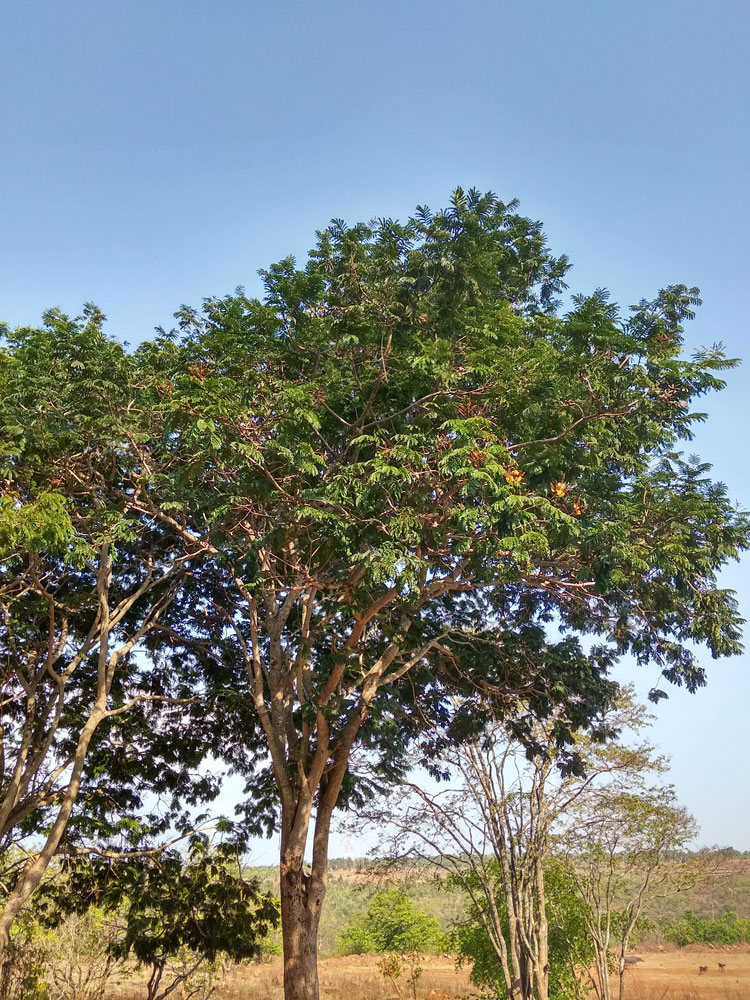Peela Gulmohar - Yellow Flame Tree

Peltophorum pterocarpum
Summary
Scientific Classification
Kingdom: Plantae
Division: Angiospermae
Class: Dicotyledonae
Order: Fabales
Family: Fabaceae
Genus: Peltophorum
Species: P.pterocarpum
Scientific Name: Peltophorum pterocarpum (DC.)K.Heyne.
Common Names:
English: yellow-flame.
Hindi: peela gulmohar.
Marathi: peela gulmohar.
Description:
- Habit & Habitat: A big tree, young branches rusty-hair, terrestrial habitat.
- Distribution: native of Sri Lanka, the Andamans, the Malay Peninsula and North Australia.
- Morphology:
Leaf: Abruptly bipinnate, leaflets 8-10 pairs, oblong, obtuse, base oblique.
Inflorescence: Yellow in terminal, racemose panicles.
Flower: Calyx cup-like, coppery-red, valvate. Petals 5, obovate, wavy yellow, hairy at base.
Androecium:Stamens 10 free, hairy at base, anthers golden-yellow.
Gynoecium: Ovary sessile, 1-3 ovuled, style long and thread-like, stigma shield-like.
Fruit: Pods flat, rusty red, oblong, thin at both ends.
Flowering and Fruiting Time: September - November and March – May.
Seed: 1-4 seeds present. - Propagation: seeds.
- Importance:
Planted as an ornamental tree on road sides. Traditional medicine - In particular, the bark is used as treatment for sprains, bruises, swelling, eye problems, body sore and intestinal disorders. Leaflets and buds are found to have antifungal properties while an alcoholic extract from the flowers has anti inflammatory and antibacterial properties. Moreover, the bark produces a yellowish brown dye which is used in the textile industry particularly for dyeing batik products and fishing nets. The wood is used as fuel and as material for constructions, boat building, cabinet making, etc. - Location:
 Trees of Empress Botanical Garden - Project supported by
Trees of Empress Botanical Garden - Project supported by